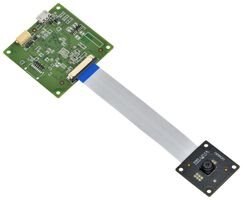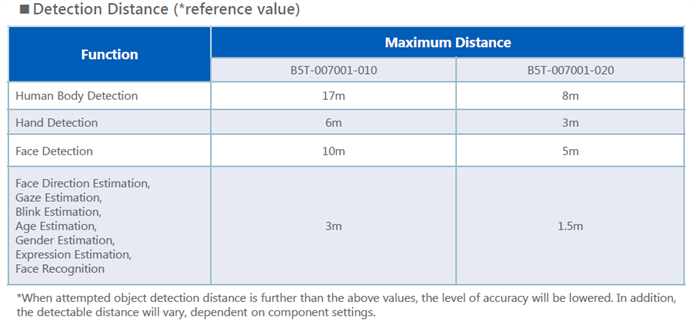I was fortunate to be selected as the roadtester for the Omron HVC-P2. I just received notification that the unit should arrive next week, so I thought I should do some research to prepare for the roadtest.
It appears that this is Omron's second iteration of the HVC hardware. The HVC-P1 has a lower resolution camera (640x480) that is integrated on the recognition processing board. The HVC-P2 has a much higher resolution camera (1600x1200) and the camera is on a separate board that is connected to the recognition processing board with a flex cable. I'm not sure if the P2 has superceded the P1 or if they are both going to be available going forward. The Human Vision Component (HVC) hardware uses Omron's "OKAO Vision" image sensing technology. This technology has been licensed for use in over 10 million digital cameras and smartphones. The HVC-P1 has been available since 2014 and the HVC-P2 was introduced in 2016. Possible uses for the HVC products are digital signage, vending machines, and smart appliances.
There are 2 models of the HVC-P2, a wide-angle (90 degree) and long-distance (50 degree). The roadtest model is the B5T-007001-10 (long-range). I believe wide-angle model is primarily intended for kiosk and appliance applications. It would have been nice to test the 2 models side-by-side, but I prefer the long-distance model because I want to use it for home security applications.
The Evaluation Software provided with the HVC-P2 is only available for Windows 7 Pro, Windows 8.1 Pro, and Windows 10 Pro. Communication is via USB UART.
I would like to use the HVC-P2 with a Raspberry Pi as a standalone security monitor with scheduling and alert capabilities. There is some sample python code and a python API class, so I'm hoping that this will be straightforward to implement. For the roadtest I'll initially evaluate the HVC-P2 using the Windows software before trying it out with the RPi.


